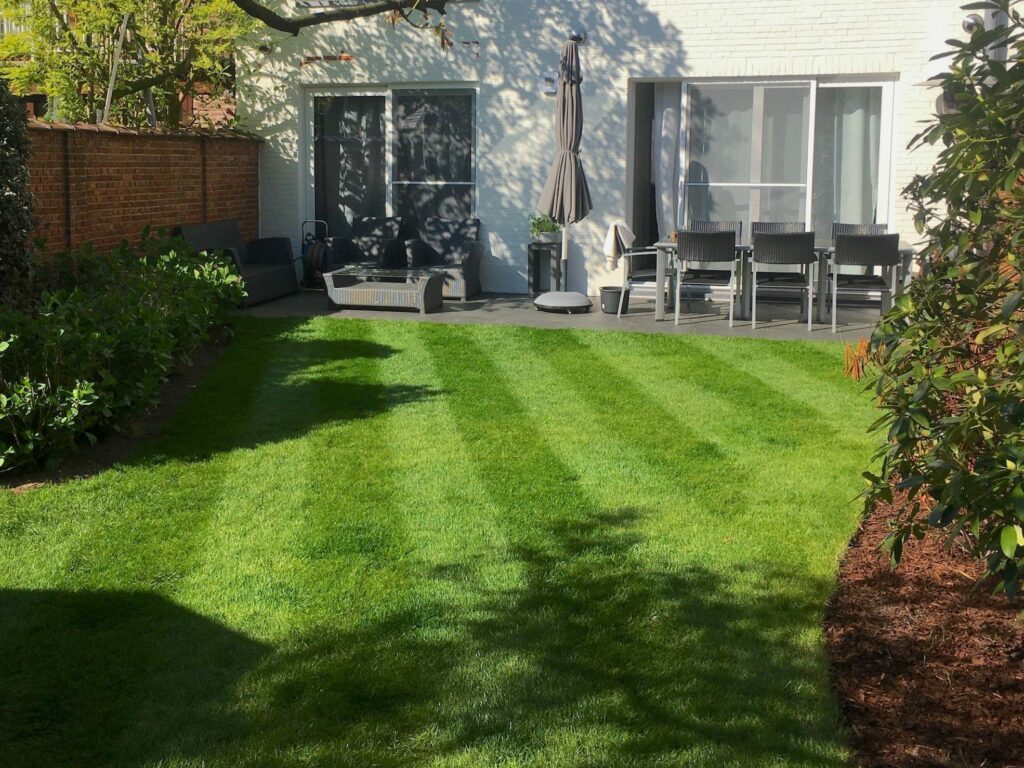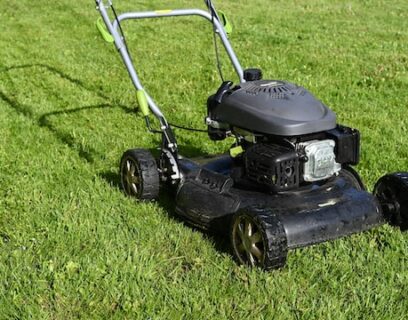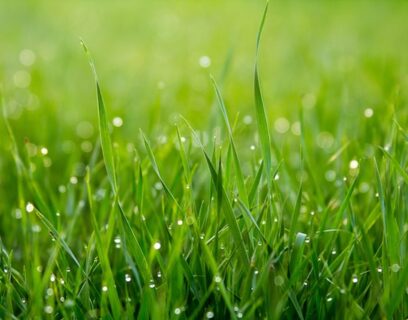Log in or create new account to save this product to your wishlist.
How to Improve Your Lawn in a Shaded Garden | Complete Guide
How to Improve Your Lawn in a Shaded Garden
Latest articles
7 MIN 22 Jul How to keep your lawn in shape this summer 9 MIN 15 Jul Watering Your Garden: 10 Top Tips! 11 MIN 15 Jul Is Your Grass Type Right for your Garden? 11 MIN 10 Sep Create Your Low-Maintenance Garden – Tips and Ideas 11 MIN 08 Sep The Ultimate Guide to Choosing the Perfect Hedges for Your Garden 12 MIN 30 Aug The Top 20 Evergreen Climbers to Transform Your GardenDoes your lawn thrive in full sun? Does it look lush and green and weed-free but for a couple of dark spots that look thin, soggy, and full of moss?
Or maybe your lawn is completely shaded from full sun, and you think that you’re doomed to a lifetime of grotty grass coverage, surrounded by moss and weeds?
Well, we’re happy to inform you that you’re wrong! But not in a smug way, of course.
This article is going to share the secrets to a beautiful, lush, green lawn, even in the most shaded parts of your garden.
So, if you want to know how to turn your boggy, mossy, weedy patch into a beautiful thriving lawn that you’re proud of, read on.
If nothing grows in your shaded garden
If your garden is in full shade and feels like the place that plants go to die, there is hope!
Sure, the vast majority of garden plants need sunlight to thrive, but it’s a case of choosing varieties that thrive in the shade.
Think forests: when you go for a walk in woodland areas, you’ll notice a plethora of wildflowers that flourish under the shade of trees. And you’ll see that healthy grass grows between the trees as well.
So, your shaded garden might be a haven for weeds, but with the proper preparations (and soil conditions), you could have a beautiful lawn, with beds full of shade-loving plants.
But before we rush to the garden centre to pick our plants, we need to consider the soil.
Shady soil conditions
If you sit in full sun, you feel the benefit of the sun’s UV rays that heats your skin and everything within direct coverage. But sit in the shade, and the temperature drops, especially if there’s a breeze.
Shady lawns are subject to lower temperatures because they lack direct sunlight. However, they still usually receive the same amount of rainfall. The lower temperature, along with a proliferation of rainfall, makes shaded areas of your lawn cold and soggy, making it a haven for weeds and moss (and the worst possible conditions for most lawns).
But it’s not a disaster.
You CAN improve the chances of weed- and moss-free grass that thrives in the shade.
How do I improve the soil conditions of shaded areas?
The first thing to consider is how to raise the temperature of your shady soil.
Most grass seed requires the soil to reach at least 10ºC for it to germinate. But waterlogged soil takes much longer to heat up because it requires more energy to heat.
Soil in full sun is a good insulator of heat, absorbing heat relatively quickly and holding onto it, but soggy soil takes MUCH longer to warm up. Water is an ineffective insulator – think about how quickly your cup of tea goes cold.
So, think about improving the drainage of shaded areas to help the soil reach (and maintain) the right temperature for grass seed germination. It might take a little longer for your shaded soil to reach the right temperature, but it WILL get there with the proper treatment.
How do I improve the drainage of my soil?
Firstly, it’s essential to recognise what TYPE of soil you’re dealing with.
Heavy clay soil holds onto moisture well, while sandy soil is blessed with excellent drainage. We don’t need to worry so much about drainage for sandy soil – you just need to choose the correct variety of grass seed for shaded areas (more about that later).
How do I know what type of soil I have?
The easiest way to analyse your soil is to grab a handful and squeeze it in your palm for a couple of seconds (if the soil is dry, water it until it looks wet).
Open your palm, and examine what’s there.
If the soil has stuck together and resembles the stuff you used to make ashtrays with at school, unsurprisingly, you have heavy clay soil. This type of soil holds onto moisture and quickly becomes waterlogged.
If, on the other hand, the soil is still crumbly and falls apart again when you open your palm, then your soil is sandy, and the drainage of your soil is probably pretty good (but it still needs improvement).
So, sandy soils are brilliant, right?
Wrong. Sandy soils may drain well, but really sandy soil doesn’t hold onto moisture at all. Water runs through it efficiently (good times), but it washes away the nutrients easily (bad times).
Sandy soils need regular fertilisation and watering to boost nutrient levels. Mixing plenty of organic matter into your sandy soil will improve its texture and water retention.
Read on for tips on digging in organic matter to improve the soil condition.

How do I improve heavy clay soil?
Like sandy soil, clay soil is both a blessing and a curse. Clay soils are moisture-retentive and rich in mineral nutrients such as calcium, potassium, and magnesium. So, whatever grows in clay soils enjoys a nutrient-rich, drought-resistant environment.
So it’s not all bad.
But it’s the drainage that’s the problem here.
Luckily, there are plenty of solutions, from soil conditioner and coarse grit to adding well-rotted compost and fertilisers, which helps to aerate the soil and improve the drainage.
Mixing grit into the soil reduces its heavy density and improves drainage, but it also improves your plants’ ability to develop healthy root networks.
How do I prepare heavy clay soil?
We’re not going to lie – this is going to take a bit of effort. But it’s well worth it, and you’ll reap the benefits later on down the line.
You’ll need at least 6-8 inches of organic matter to mix into the soil. Make that a combination of coarse grit and homemade compost (if you have it) or shop-bought bagged compost if you don’t.
Better get your digging gear on!
Mix the organic matter into the top 6-12 inches of the soil – don’t be shy of disturbing the earth with your digging fork or spade. If digging is a strain for your back, however, you could consider tilling the soil using a tiller tool.
This is going to make a mess of your existing lawn; there’s no doubt. But it WILL be worth it in the long run. If your lawn is in partial shade, you probably only need to focus on the shady areas if your grass is doing well in full sun.
Once you’ve finished digging and mixing, the soil level will appear higher than the rest of the lawn. This will break down over time, but – essentially – you’ve created better soil conditions for lawn growth.
Is that it?
Not quite; but this single job will have a lasting effect. If you do the soil test again after completing the above task, you’ll find that the soil isn’t as heavy and doesn’t stick together as much as it did.
However:
Over time, the soil settles and can become compacted and heavy again.
So, it’s crucial to regularly aerate the soil with a garden fork or aerating sandals.
Yes – you read that correctly: aerating sandals.
What are aerating sandals?
Aerating sandals are simple devices with spikes on the underside that slip over your shoes (make sure you attach them the right way round!!!!).
Once you’ve slipped the sandals over your shoes, all you need to do is walk across your lawn. Don’t just stick to the shaded areas we’ve been working with – all lawns benefit from regular aeration.
When you step on the lawn, you’ll notice a very satisfying sinking feeling – that’s the spikes sinking into the soil.
And that’s it. Enjoy it!
Create lots of tiny holes in the surface of your soil, and you’ve instantly improved your drainage.
Is that everything I need to do to improve my lawn in a shady garden?
No. The next step is essential.
Once you’ve treated your soil, you’ll need to sow new grass seed – and this is where you might have possibly gone wrong in the past: you need the correct type of seed for shady lawns.
Most grass does best in full sun, but you want a lawn seed variety that thrives in the shade, like our Shade & Sun lawn seed.
Our Shade & Sun seed mix has a high proportion of Red Fescue which does well in the shade. Along with Perennial Ryegrass for fast growth and Kentucky Bluegrass (don’t worry – it’s green!) for longevity, Shade & Sun sown over freshly prepared soil will provide a fantastic, resistant lawn that you’ll enjoy for years to come.
How do I sow lawn seed?
The simple answer is to sprinkle the seed on top of the soil. The grass seed needs contact with the soil and access to any available light, so lay the seed on top of the earth – don’t cover it over.
Ensure that the seed makes contact with the soil – you could gently rake it in if you’re not sure.
Check out our experts’ guide to growing lawn seed for more information.
Beautiful lawns in shady areas
So, there you have it. You CAN have a beautiful, thriving lawn in shaded areas. It takes a bit of work, but there are few things in life that come easily.
With a bit of love and attention, your lawn will establish well in the shade and look beautiful for years to come.
Ask MOOWY
You might have some questions. Luckily, we love questions and we love to help.
So, get in touch, and we’ll be happy to help you develop your lawn into one that you’ll love for years to come.
Leave a comment
Your answer will be displayed on the site and the interested party will be notified by email.
Leave a comment
Have a question or want to share your experience? Leave us a comment.
Read more
The best tips and tricks for a lush green lawn
 Scarifying Kit
All products after scarifying | Quickly restores the lawn after scarifying | Outsmart weeds quickly with the use of this kit
From: € 39.99
Scarifying Kit
All products after scarifying | Quickly restores the lawn after scarifying | Outsmart weeds quickly with the use of this kit
From: € 39.99
 Spring Lawn Care Kit
MOOWY’s choice for the spring | Quick recovery of your lawn after winter | A strong lawn prevents weeds
From: € 25.99
Spring Lawn Care Kit
MOOWY’s choice for the spring | Quick recovery of your lawn after winter | A strong lawn prevents weeds
From: € 25.99
 Long Lasting Lawn Fertiliser
Effective for 90 days | See results in 14 days! | Suitable for all types of grass and soil
From: € 13.99
Long Lasting Lawn Fertiliser
Effective for 90 days | See results in 14 days! | Suitable for all types of grass and soil
From: € 13.99
Do you want a lawn calendar?
🌱 All important maintenance moments for your lawn during the year. Leave your email and we will send you the lawn calendar for free.
Enter your email
Receive the lawn calendar in the mail
Enjoy a green lawn all year round!














Comments (0)
There are no comments yet. Well then, what are you waiting for to
Be the first to write your comment!inaugurate this pretty page?
Do you have some comments?